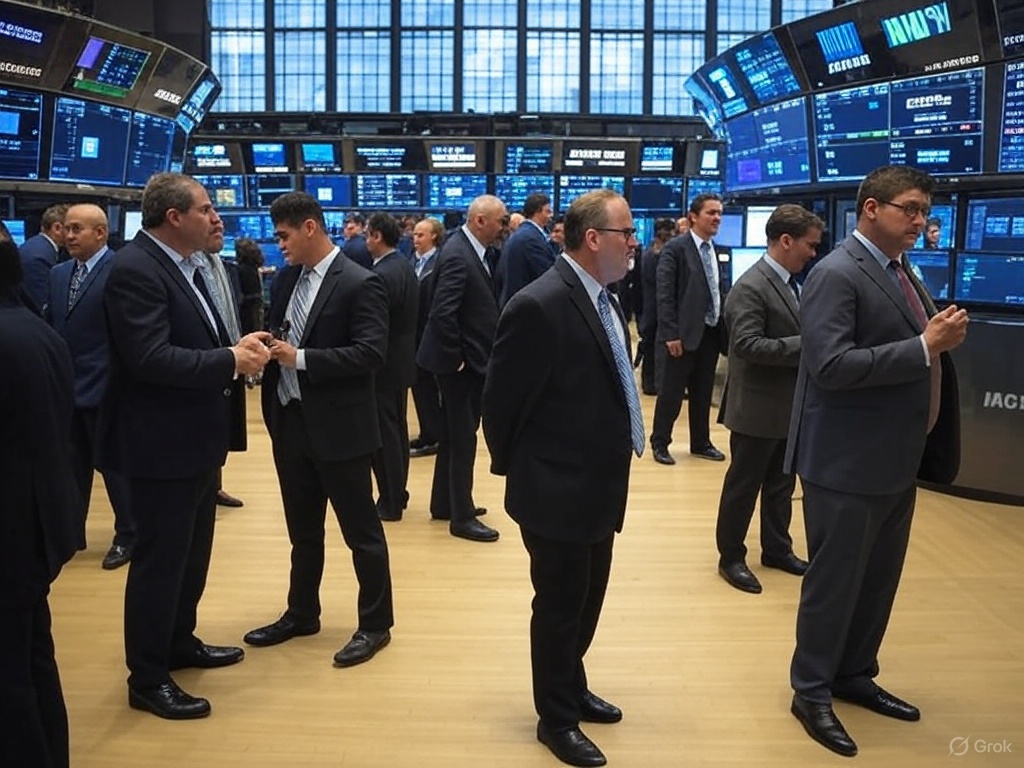Market Wrap: Stocks Surge Despite Trade Tensions and Inflation Concerns
Wall Street concluded the week with a strong rally on Friday, March 14, 2025, with all major indices posting significant gains despite ongoing concerns about trade tensions and inflation. The Dow Jone

Wall Street concluded the week with a strong rally on Friday, March 14, 2025, with all major indices posting significant gains despite ongoing concerns about trade tensions and inflation. The Dow Jones Industrial Average closed up 674.62 points (+1.65%) at 41,488.7, while the tech-heavy NASDAQ Composite surged 451.07 points (+2.61%) to finish at 17,754.4. The S&P 500 rose 117.42 points (+2.13%) to 5,638.94, and the Russell 2000 small-cap index advanced 4.76 points (+2.40%) to 202.80.
Markets Enter Correction Territory
Despite Friday's strong performance, the week was marked by significant volatility, with the S&P 500 officially entering correction territory by dropping more than 10% from its recent highs. This follows the NASDAQ Composite, which had already slipped into correction earlier this month on March 7. The correction comes after two consecutive years of 20%+ returns for the S&P 500, which had left valuations stretched as geopolitical and economic risks increased.
Several factors have contributed to the market pullback:
- Valuation concerns: After parabolic gains in large-cap technology stocks, particularly the "Magnificent Seven," which accounted for much of the S&P 500's 2024 performance, many investors began questioning sustainability. nvidia, for example, had surged more than 800% between 2023 and 2024, making it vulnerable to a correction.
- Trade war anxieties: President Donald Trump's evolving stance on tariffs has created uncertainty in the markets. After initially threatening to double tariffs on Canadian steel and aluminum, Trump walked back this position, maintaining the previously announced 25% rate. This reversal came after Ontario announced—and subsequently abandoned—plans to place a surcharge on electricity exports to the United States.
- Federal Reserve uncertainty: Investors are hoping for signals of a more accommodative policy at next week's Federal Reserve meeting, but the central bank has been hesitant to commit to rate cuts given persistent inflation concerns.
Mixed Inflation Data
Recent economic reports have provided conflicting signals about inflation and economic growth:
The February Consumer Price Index (CPI) came in softer than expected, suggesting inflation is gradually easing—a welcome development for markets hoping for a more accommodative Federal Reserve. However, price pressures continue to persist in key categories such as shelter.
Meanwhile, the latest Producer Price Index (PPI) showed stagnant price growth, coming in at 0.0% month-over-month against expectations of 0.3%. While the year-over-year PPI final demand figure of 3.2% was slightly below the expected 3.3%, the flat monthly reading has raised questions about underlying economic strength.
The PPI breakdown revealed some interesting dynamics:
- Final Demand Goods rose 0.3%, driven by a significant 1.7% surge in food prices
- Energy prices declined 1.2%, led by a 4.7% drop in gasoline prices
- Egg prices surged an eye-catching 53.6%
- Final Demand Services declined 0.2%, the largest drop since July 2024
Looking Ahead
Investors remain cautious despite Friday's rally, with many selling into strength and preventing a sustained market recovery. This pattern of volatility is expected to continue as traders closely monitor next week's Federal Reserve meeting for clues about future monetary policy.
Trump has downplayed concerns about a tariff-led recession, stating he doesn't foresee one and believes the U.S. economy will boom. However, his "frantic and mercurial tariff barrage" over the past six weeks has reportedly "spooked investors and befuddled corporate leaders," creating a challenging environment for long-term investment planning.
As we head into next week, market participants will be watching for any shifts in tone from Fed Chair Jerome Powell, particularly regarding the timeline for potential rate cuts. With options positioning signaling the highest expected volatility for economic reports since March 2023, traders should brace for continued price swings across all major indices. The FOMC Statement issued on Wednesday March 19 will also include The Summary of Economic Projections. It will give investors a new understanding of what members of the FOMC think about the health of the U.S. economy.
Disclaimer: The views in this article are from the original Creator and do not represent the views or position of Hawk Insight. The content of the article is for reference, communication and learning only, and does not constitute investment advice. If it involves copyright issues, please contact us for deletion.










